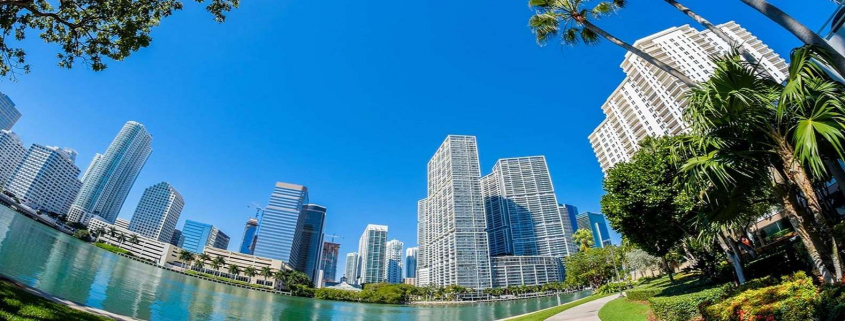Slower sales and a glut of inventory has led to a buyers’ market for South Florida luxury properties, according to Miami Beach real estate agent Jill Eber.
“For almost five years we were just on an upward spiral,” Eber, of Coldwell Banker’s the Jills, told a gathering of real estate professionals Wednesday evening. “But, right now, it has adjusted and it has become more of a buyers’ market. As a result, developers are adjusting their pricing and increasing broker commissions to move units. In no way is this like 2008, 2009, and 2010. The market has been steady.”
Eber participated on a panel hosted by the Miami chapter of the Asian Real Estate Association of America at Brickell City Centre’s East, Miami hotel. The discussion was moderated by Coldwell Banker luxury real estate Vice President Craig Hogan and featured Debora Overholt, Brickell City Centre’s vice-president for retail, Swire Properties Vice President Maile Aguila, Eber, Miami Association of Realtors President Teresa Kinney and Ramona Messore, vice-president of Saks Fifth Avenue at Brickell City Centre.
Overholt and Aguila offered their insights into Swire’s ability to finish massive developments like Brickell City Centre. Overholt noted that the $1 billion nine-acre mixed use project is modeled after Pacific Place, a complex of office towers, hotels and a shopping centre the company built in Hong Kong 27 years ago.
“If you are familiar with Pacific Place, what we are developing is very similar to that,” Overholt said. “We are very excited to bring something fairly new to U.S. retailers, but something we already do well.”
Since opening in 1989, the four-floor mall at Pacific Place has more than 711,000-square-feet of retail space that houses a Harvey Nichols department store and 140 luxury brand shops and boutiques. Similar to Brickell City Centre, the mall is integrated into three Class A office towers, four five-star hotels, and a condominium. Swire spent $2.1 billion in 2011 on a redesign project led by Thomas Heatherwick.
Aguila told the audience Swire’s success with Pacific Place proves the company has the strength and wherewithal to deliver every phase of Brickell City Centre.
“When we do things, we do things long-range and take a long time,” Aguila said. “I remember when we were developing Brickell Key, we were all looking forward to a retail component and food and beverage component that just never happened. We saw that need. We had the vision to come into the area at the right time and the right place.”
Source: The Real Deal


